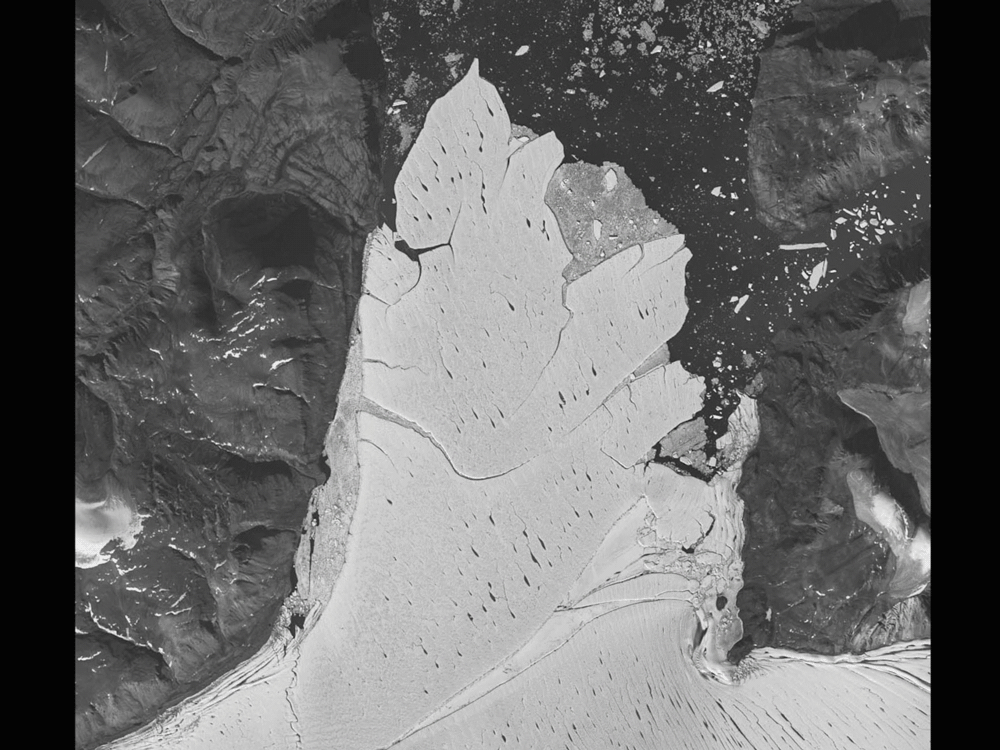These are the first signs we see that Pine Island ice shelf is disappearing. This damage is difficult to heal.
The 79 North glacier still has an ice shelf, as do some of Greenlands other most northern glaciers, but many of these have lost considerable size in recent decades.
The new paper shows that the Amundsen Sea Embayment ice shelves have gone through most, but not all, of the Jakobshavn steps, Alley said in an email. [A] warming ocean thinned the ice shelves, this reduced buttressing, this let the non-floating ice move faster, contributing some to sea-level rise and also starting to break the sides of the ice shelves, but additional acceleration could occur if the rest of the steps (further fracture and ice-shelf loss) should occur.
Yana Kibyakova looks at her car parked along a flooded street that was caused by the combination of the lunar orbit which caused seasonal high tides and what many believe is the rising sea levels due to climate change on September 29, 2015 in Miami Beach, Florida. The City of Miami Beach had inputted a five-year, $400 million storm water pump program and other projects in hopes of keeping the ocean waters from inundating the city as the oceans rise even more in the future.Photo by Joe Raedle/Getty Images
A bus plows through a flooded street that was caused by the combination of the lunar orbit which caused seasonal high tides and what many believe is the rising sea levels due to climate change on September 29, 2015 in Miami Beach, Florida.Photo by Joe Raedle/Getty Images
Multiple ice shelf collapses have already been seen in Canada, Greenland, and the warmer Antarctic peninsula, where the onetime Larsen A and Larsen B ice shelves fractured and, today, no longer exist.
When the ice shelves are damaged by climate change, as we saw in the Antarctic Peninsula in the last several decades, their buttressing effect is reduced and the ice streams speed up and raise sea levels, said Isabella Velicogna, a glaciologist at the University of California, Irvine, who commented on the new study. The speed up increases damage, a positive feedback which is not good news.
If a similar process plays out in the Amundsen Sea of West Antarctica, where Pine Island and Thwaites are located, the sea level consequences could be enormous.
Lhermitte provided calculations showing that over the past six years, the western and central parts of the Pine Island ice shelf have shrunken in size by about 30 per cent from about 1,500 square miles in size down to closer to 1,000 square miles. In other words, an area about the size of Los Angeles has been lost.
This shear margin is so damaged we think it preconditions this ice shelf for destabilization on the longer term, said Lhermitte. These are the first signs we see that Pine Island ice shelf is disappearing. This damage is difficult to heal.read more
Two enormous Antarctic glaciers are breaking free and could raise sea levels, scientists say – National Post


